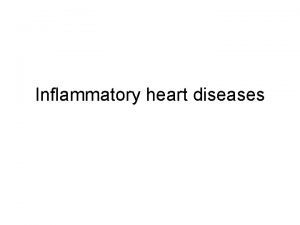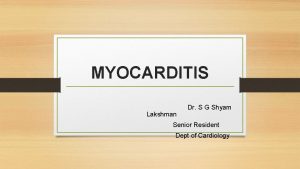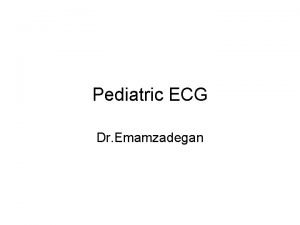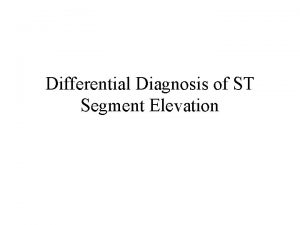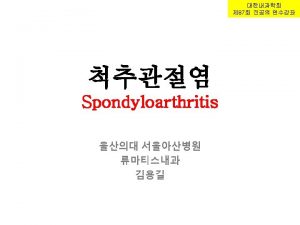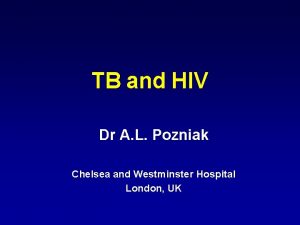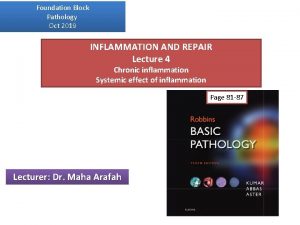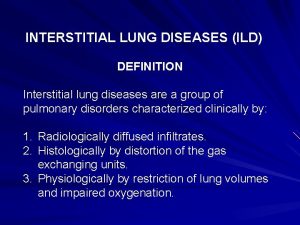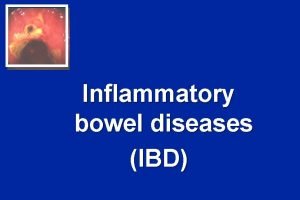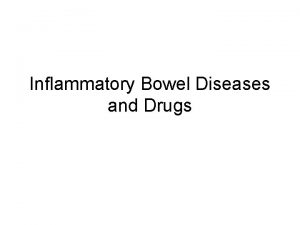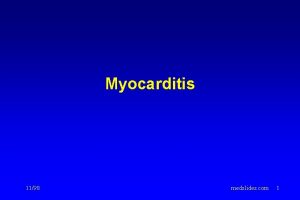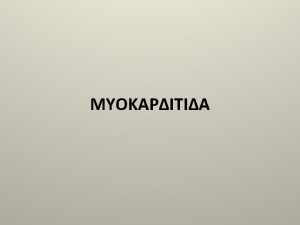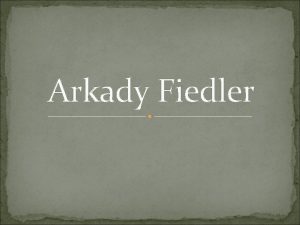Inflammatory heart diseases Fiedler interstitial myocarditis From cases











- Slides: 11

Inflammatory heart diseases

Fiedler interstitial myocarditis From cases of the Pathology Department - U. M. F. “Gr. T. Popa” Iasi Fig. 16. 1

Fig. 16. 2 Fig. 16. 1 -2. Fiedler interstitial myocarditis • Myocarditis of unknown etiology and cause of SCD with CF in children • Diffuse interstitial inflammatory infiltrate composed of neutrophiles, lymphocytes, macrophages and multinucleated giant cells • Extensive myocyte necrosis

Viral interstitial myocarditis From cases of the Pathology Department - U. M. F. “Gr. T. Popa” Iasi Fig. 16. 3

Fig. 16. 4 Fig. 16. 3 -4 Viral myocarditis • Interstitial mononuclear inflammatory infiltrate and variable diffuse interstitial edema • Myocardial fibers with degenerative lesions that range from minimal to moderate; focal myocite necrosis.

Rheumatic myocarditis From cases of the Pathology Department - U. M. F. “Gr. T. Popa” Iasi Fig. 16. 5. Aschoff granuloma

Fig. 16. 6. Rheumatic myocarditis • Aschoff granuloma: micronodular lesion located in the myocardial connective interstitium with paravascular disposition • Aschoff granuloma is composed of: – Central area of fibrinoid necrosis – Aschoff cells: large cells, bazophilic cytoplasm, and 1 or 2 nuclei – Anicikov cells: fusiform cells with irregular nuclei, looking as caterpillar – Macrophages, lymphocytes, and plasma cells, fibroblasts

Rheumatic mitral and aortic stenosis From: Stevens A. J Lowe J. Pathology. Mosby 1995 Macroscopically, mitral valves are thickened, hard, with fused comissures, defining a small, round or slit-like orifice looking as a mouth-fish. In AS, aortic cusps are thickened by fibrosis, comissures are fused, and aortic oriffice is narrowed. Fig. 16. 7.

EISA VS EIA vegetative E. vs ulcero-vegetative E. Fig. 16. 8 FD Infectious agents, with low virulence, originating from asymptomatic infectious foci + intermittent bacteriemia: Streptococcus viridans, fungi. Infectious agents, with high virulence, originating from acute infectious foci, clinical manifested: lung abscess + permanent bacteriemia: staphylococcus, etc. Site Previous valvular lesions: CR, MCC Normal valvular apparatus MA MI MA-multiple, friabile, vegetations placed on the valvular apparatus. MI-the vegetations consist of dense aggregates of fibrin and platelets and a small number of microorganisms and neutrophils. MA-Bulky, friable, vegetations arranged on the surface of valves with damaging of the valvular apparatus perforation or rupture. MI-the vegetations consist of aggregates of fibrin and platelets, and a large number of microorganisms and neutrophils. CO - CHF-chronic heart failure - systemic embolism heart, spleen or renal infarcts - focal glomerulonephritis - AHF-acute HF (valve perforation or rupture) - Systemic embolism-pyoemic microabcesses in lungs and kidney - valvular ring abscess and myocardial abscess

Subacute infectious endocarditis-(vegetant endocarditis) - EISA From: Stevens A. J Lowe J. Pathology. Mosby 1995 Fig. 16. 9. Macroscopy: multiple, polypoid, gray-reddish and friable vegetations, arranged in bouquet on the mitral valve surfaces, and small vegetations grouped on adjacent parietal endocardium, too. Usually, they don’t produce valvular damages: rupture or perforation.

Acute infectious endocarditis-(ulcerovegetant endocarditis) - EIA Fig. 16. 10. Macroscopy: bulky, gray-reddish, friable, vegetations located on the surface of aortic sigmoid valves and parietal endocardium. By perforation, ulceration and rupture of valves, results valvular incompetence and acute heart failure
